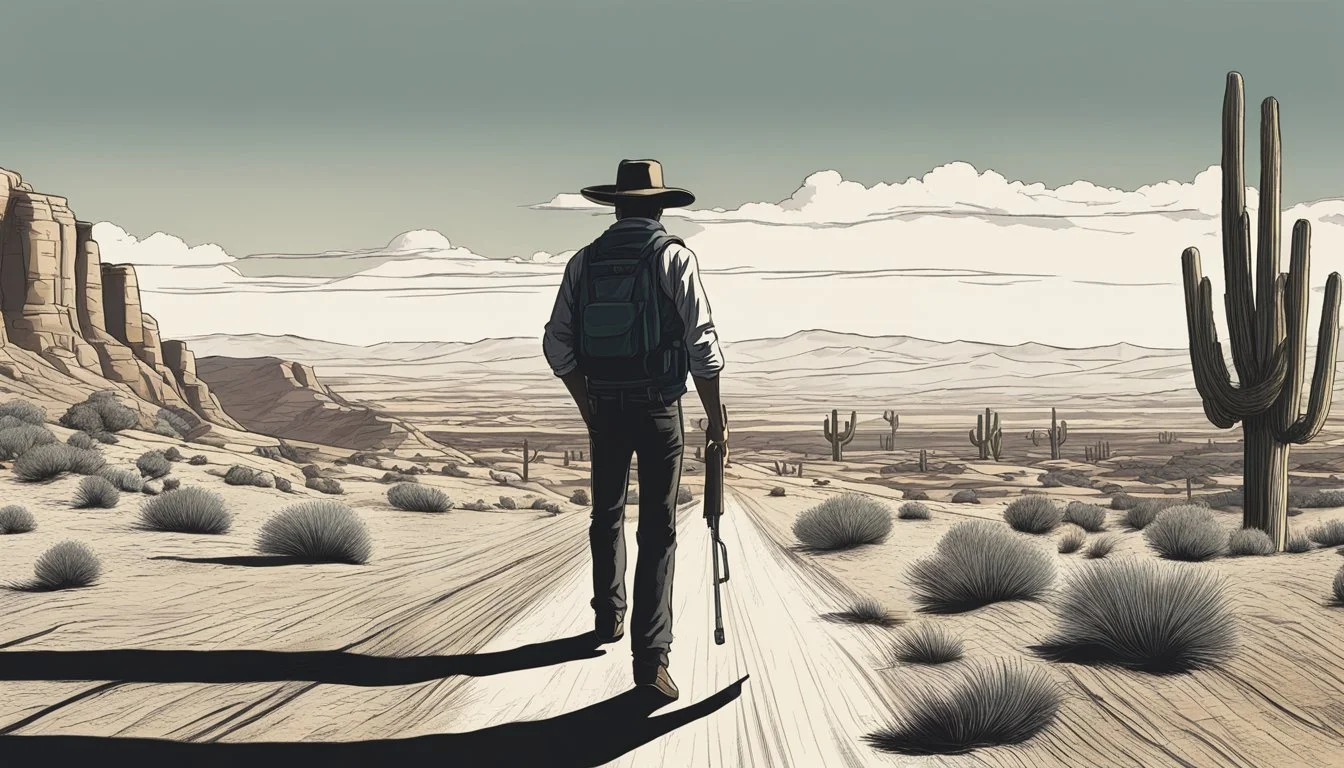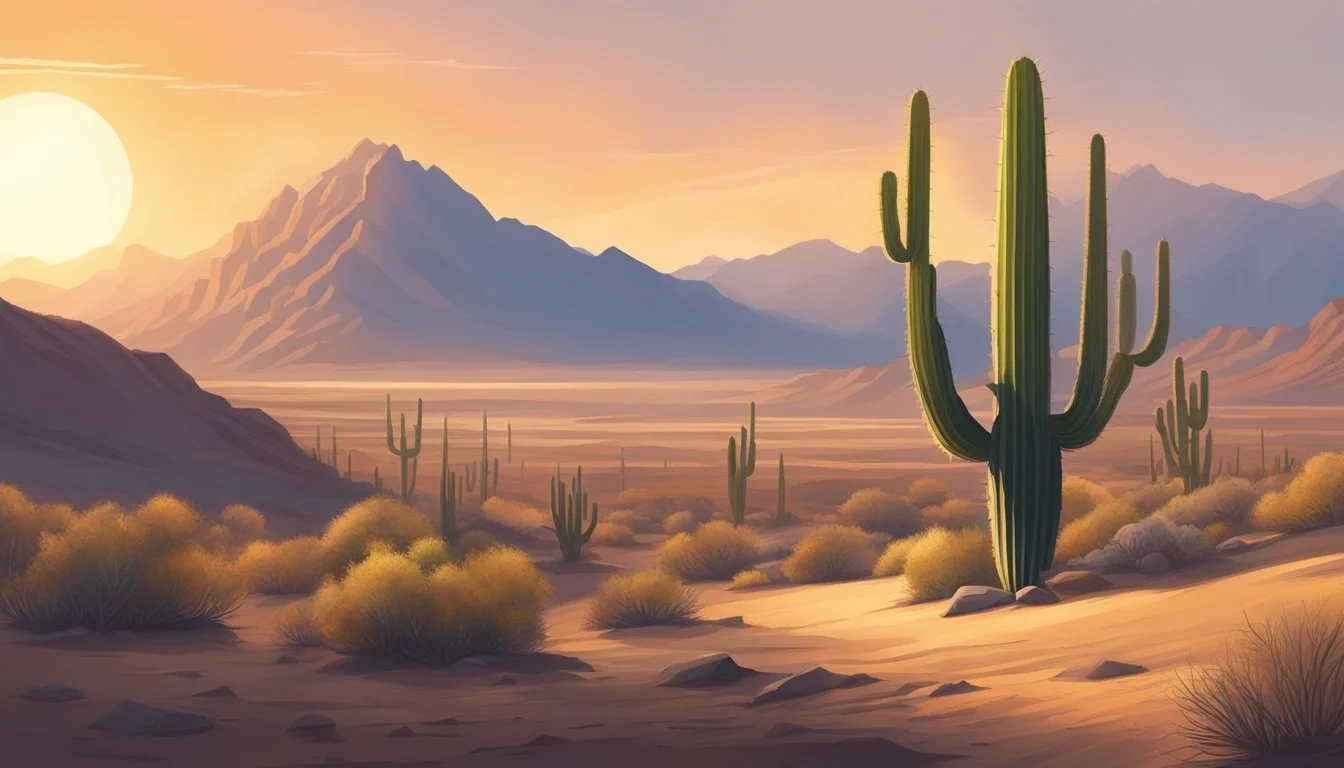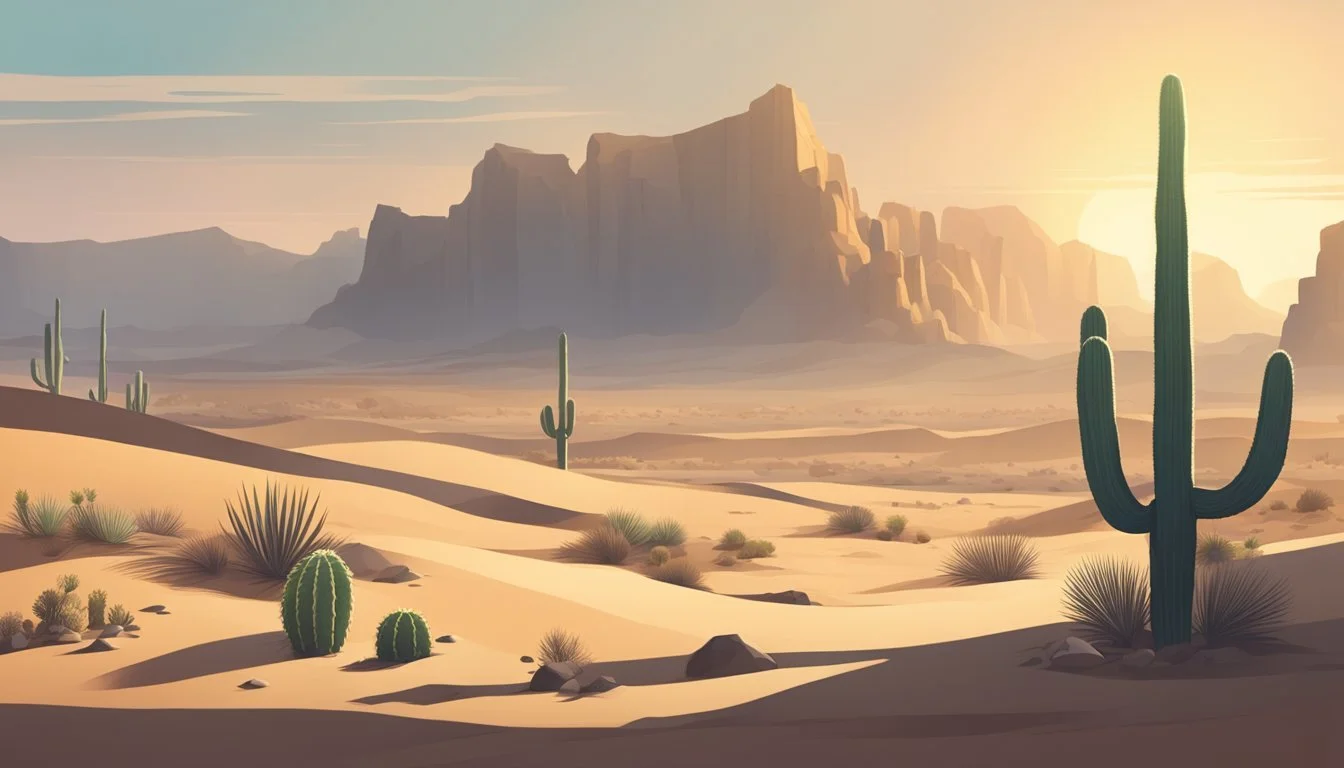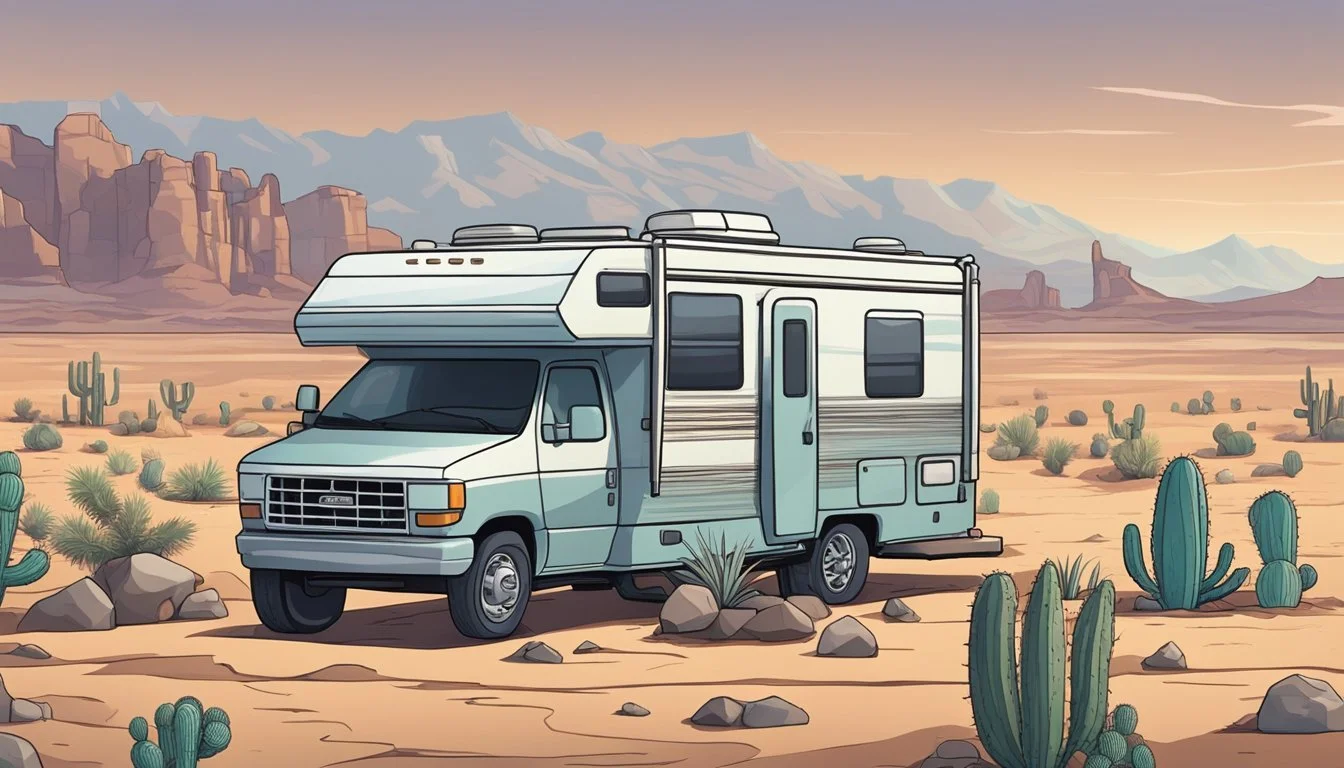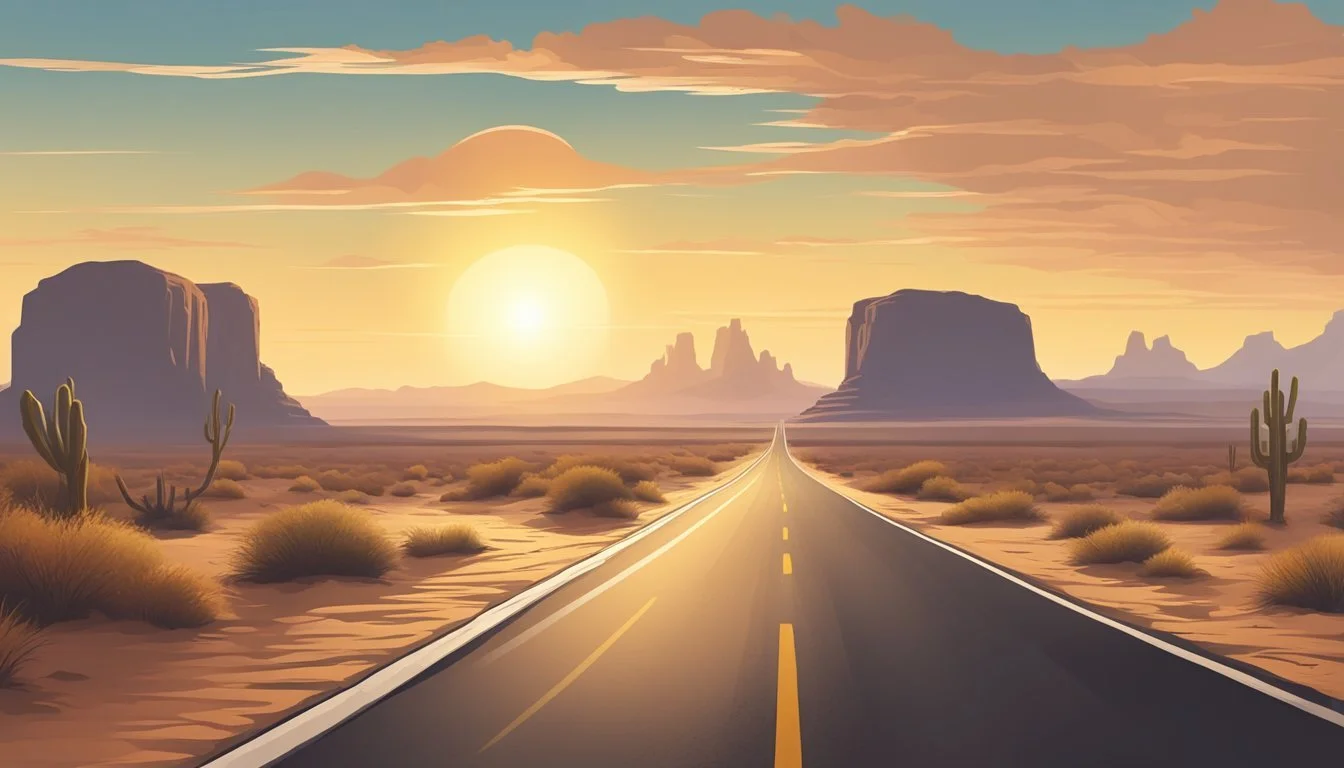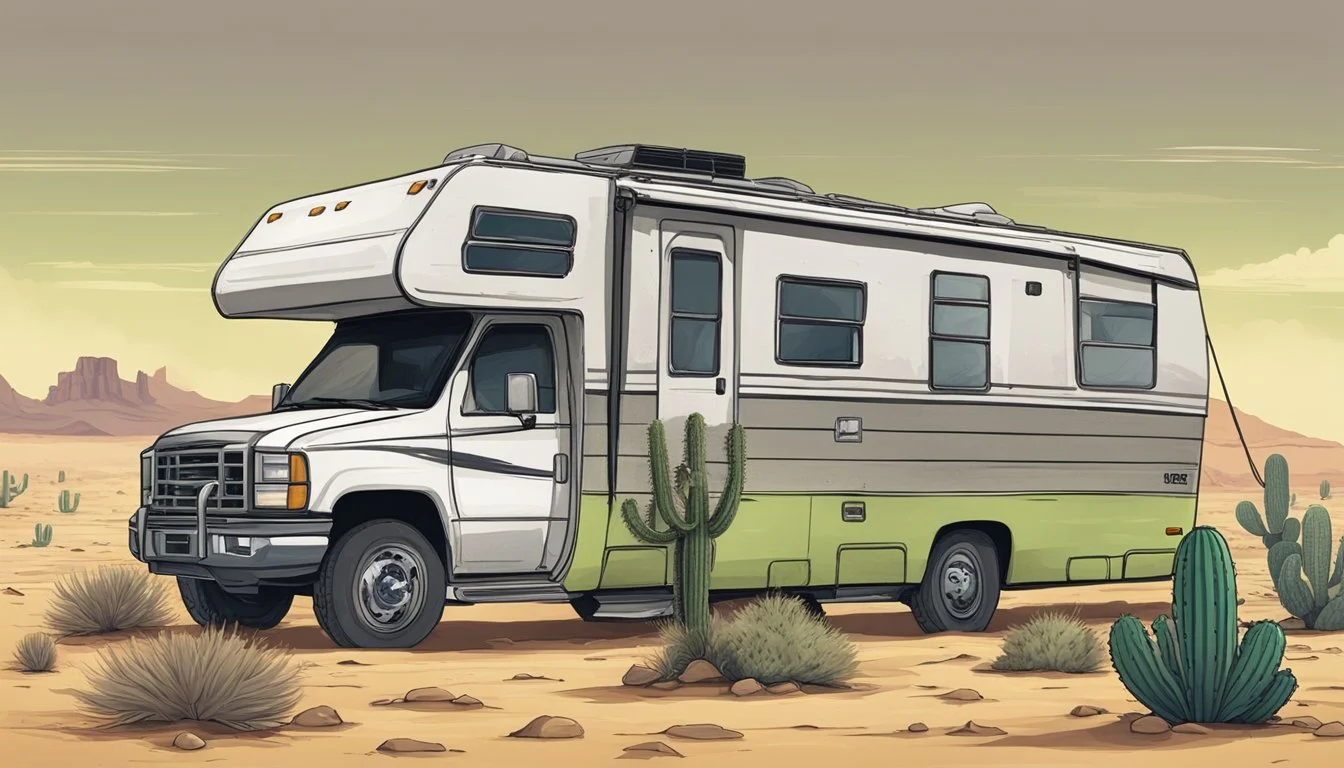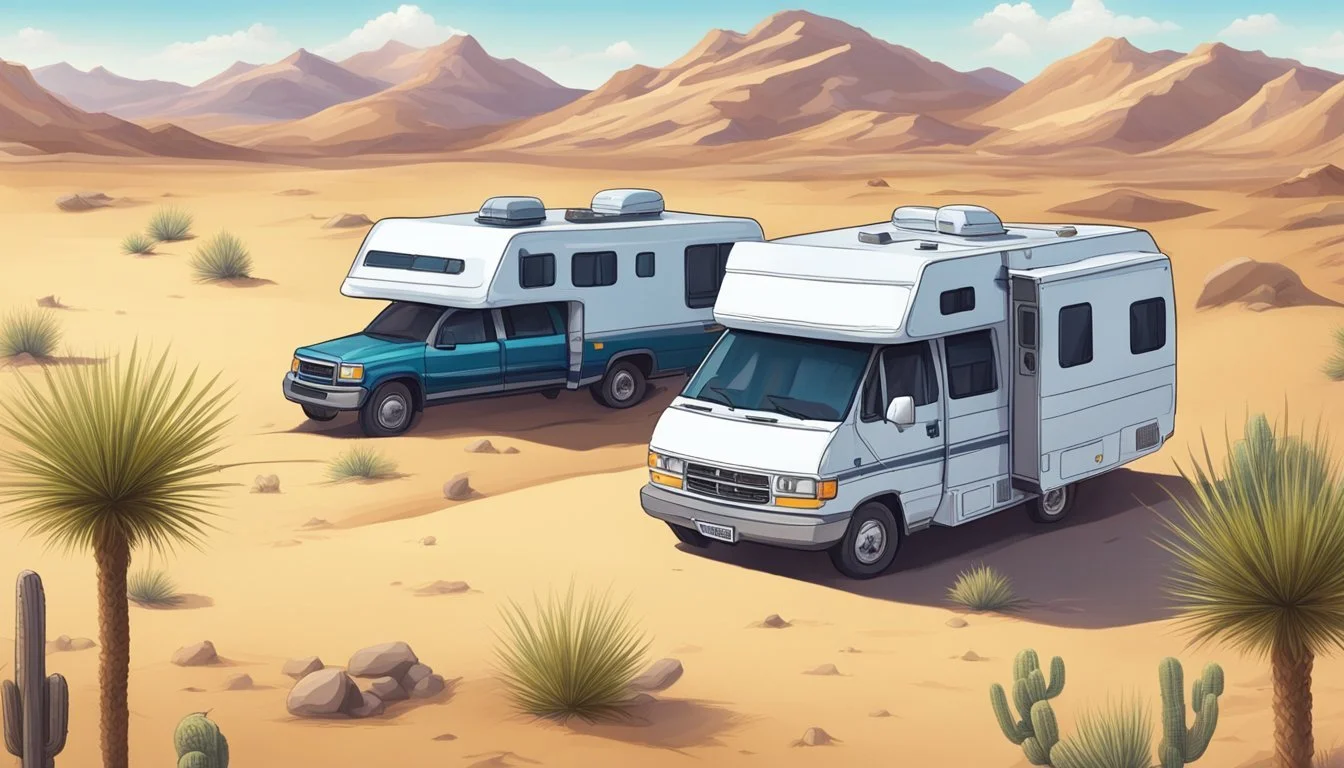The Symbolism of Desert Scenes in Breaking Bad
Unveiling Moral Desolation
Breaking Bad's iconic desert landscapes serve as a powerful symbol throughout the series. The vast, arid expanses of New Mexico's desert become more than just a backdrop for Walter White and Jesse Pinkman's illicit activities. These desolate scenes represent isolation, moral ambiguity, and the harsh realities of the criminal underworld that the characters navigate.
The desert in Breaking Bad acts as a metaphorical blank canvas, allowing characters to confront their true selves away from societal constraints. It's a place where secrets are buried, deals are made, and lives are transformed. Creator Vince Gilligan and the AMC production team skillfully use these barren landscapes to enhance the show's themes of transformation and moral decay.
From Walter's first cook in the RV to climactic standoffs, the desert becomes a character in its own right. Its vast emptiness mirrors the internal struggles of the protagonists, while its unforgiving nature reflects the consequences of their choices. The juxtaposition of human drama against this natural backdrop creates a visual metaphor that deepens the narrative and keeps viewers captivated.
Origin of Breaking Bad's Desert Symbolism
Breaking Bad's desert symbolism emerged from the show's Albuquerque setting and Western influences. The stark landscape became a powerful metaphor for the characters' moral journeys and inner conflicts.
Themes and Setting
Vince Gilligan chose Albuquerque, New Mexico as the backdrop for Breaking Bad. The city's surrounding desert provided a visually striking and thematically rich environment. This arid landscape mirrored Walter White's transformation from a mild-mannered chemistry teacher to a ruthless drug lord.
The desert's vastness and isolation reflected the characters' growing detachment from society and morality. It served as a blank canvas where characters could reinvent themselves, free from the constraints of civilization.
Albuquerque's unique geography, with its mix of urban and desert areas, allowed for seamless transitions between domestic life and criminal activities. This duality reinforced the show's central theme of moral decay.
Western Desert Motifs
Breaking Bad incorporated classic Western genre elements into its desert scenes. The lawlessness often associated with the Wild West found new expression in the show's depiction of the drug trade.
Wide-angle shots of characters dwarfed by the expansive desert evoked a sense of danger and insignificance. These visuals echoed traditional Western films, where the harsh environment often tested characters' resolve.
The desert became a proving ground for masculinity and survival skills. Characters like Walter White and Jesse Pinkman faced physical and moral challenges in this unforgiving terrain, much like cowboys in classic Westerns.
Vince Gilligan drew inspiration from films like "The Good, the Bad and the Ugly," using the desert to amplify tension and create memorable standoffs between characters.
Character Development and Symbolism
The desert scenes in Breaking Bad serve as powerful metaphors for the characters' internal struggles and transformations. The harsh landscape mirrors their moral decay and quest for freedom.
Walter White's Transformation
Walter White's journey from mild-mannered chemistry teacher to ruthless drug lord is reflected in his interactions with the desert. Early on, the vast emptiness emphasizes his vulnerability and isolation. As he becomes Heisenberg, the desert becomes his domain.
Walt's first cook with Jesse takes place in the barren outskirts of Albuquerque. The RV, their mobile lab, stands as a lone beacon of civilization amidst the wilderness. This setting underscores Walt's initial discomfort and inexperience in the criminal world.
As the series progresses, Walt grows more at ease in the desert. He conducts business deals and disposes of evidence with increasing confidence. The once-intimidating landscape now bends to his will, mirroring his growing power and moral flexibility.
Jesse Pinkman's Journey
Jesse's relationship with the desert evolves in parallel with his character arc. Initially, he views it as an exciting playground for his illicit activities. The open spaces represent freedom from societal constraints and authority figures.
As Jesse faces the consequences of his choices, the desert takes on a more sinister tone. It becomes the site of traumatic experiences and loss. The endless expanse that once promised escape now feels like a prison.
Jesse's captivity by the neo-Nazis in the final season brings his desert journey full circle. The compound where he's held represents the ultimate loss of freedom. His eventual escape through the surrounding wilderness symbolizes his hard-won redemption and break from his criminal past.
The Role of Color in the Desert
The desert landscapes in Breaking Bad serve as a canvas for vivid color symbolism. Vibrant hues contrast sharply with the arid terrain, creating visual metaphors that enhance the storytelling.
Character Association with Colors
Walter White's transformation is reflected in his clothing choices. He starts in muted beiges and grays, mirroring the desert's neutral tones. As Heisenberg emerges, he dons black, symbolizing his darker path.
Jesse Pinkman's wardrobe evolves from bright reds and yellows to more subdued tones. This shift mirrors his character's emotional journey and growing maturity.
Skyler White often wears blue, representing loyalty and sadness. Her color palette darkens as she becomes more involved in Walt's criminal activities.
Emotional and Narrative Significance
The desert's golden hues during daytime scenes evoke feelings of exposure and vulnerability. Characters often face pivotal moments under the harsh sunlight.
Nighttime desert scenes use deep blues and purples, creating an atmosphere of danger and moral ambiguity. These darker shades heighten tension during clandestine operations.
The RV's distinctive turquoise color stands out against the desert backdrop. It becomes a visual anchor, tying the characters to their illicit activities.
Red appears in moments of violence or high emotion, contrasting sharply with the desert's earth tones. It signals danger and the consequences of the characters' actions.
Iconography of the RV and Meth Lab
The RV serves as a central symbol in Breaking Bad, representing Walt and Jesse's mobile meth lab and their descent into the criminal underworld. Its cramped interior transforms into a high-tech laboratory, juxtaposing mundane domesticity with illicit drug production.
The meth-cooking process itself becomes a visual metaphor. Bubbling beakers and swirling smoke mirror the characters' moral decay and the addictive nature of their product. The distinctive blue color of their methamphetamine acts as a brand, signifying purity and potency.
Jesse Pinkman's role evolves alongside the lab equipment. Initially an amateur "cook," he develops into Walt's skilled partner. Their use of methylamine elevates their product, symbolizing their rising status in the drug trade.
Discarded objects around the RV take on new meaning in the desert setting. Abandoned cars and scattered debris reflect the characters' forsaken ethics. The harsh landscape emphasizes the isolation and danger of their endeavors.
As the series progresses, the RV shows signs of wear. Dents, rust, and mechanical failures mirror Walt and Jesse's deteriorating partnership and moral compass. The mobile lab becomes a testament to their criminal evolution and the far-reaching consequences of their actions.
Cinematic Techniques and the Desert
Breaking Bad's desert scenes employ masterful cinematography and visual style to convey deeper meaning. The show's creators use wide shots and careful framing to emphasize the vastness and isolation of the New Mexico landscape.
Cinematography and Visual Style
Breaking Bad's cinematography in desert scenes is characterized by stark contrasts and vivid colors. The harsh sunlight creates deep shadows and highlights, emphasizing the unforgiving nature of the environment. Time-lapse shots showcase the desert's changing light and weather patterns, adding a sense of cosmic perspective to the characters' actions.
The show's visual style in these scenes often incorporates a yellowish-brown color palette. This technique reinforces the arid, oppressive atmosphere of the desert. Shots frequently feature low angles, making characters appear small against the expansive sky and barren landscape.
The Use of Wide Shots and Framing
Wide shots are a hallmark of Breaking Bad's desert scenes. These expansive views emphasize the characters' isolation and vulnerability in the harsh environment. The vastness of the desert dwarfs the human figures, highlighting their insignificance in the grand scheme of things.
Framing techniques often place characters off-center or at the edges of the frame. This approach creates a sense of unease and imbalance, reflecting the moral ambiguity of their actions. The show also employs striking visual motifs, such as the recurring image of Walt standing alone in the middle of a desert road.
Metaphors of the Desert Scenes
The desert landscapes in Breaking Bad serve as powerful metaphors, reflecting the characters' inner turmoil and the harsh realities of the drug trade. These barren settings create a visual language that enhances the show's themes and character development.
Isolation and the Meth Trade
The vast, empty deserts of New Mexico mirror the isolation experienced by characters involved in the meth trade. Walter White's RV lab, parked in remote locations, symbolizes his separation from society and moral norms. The endless expanse of sand and rocks represents the characters' growing detachment from their former lives.
Drug deals in the desert highlight the dangerous nature of these transactions. The open terrain offers no protection, exposing vulnerabilities and emphasizing the high stakes involved. This stark environment also reflects the characters' internal struggles, as they navigate moral gray areas far from the constraints of civilization.
Desert Creatures and Foreshadowing
Breaking Bad uses desert wildlife as potent symbols throughout the series. The tarantula in the episode "Dead Freight" serves as a harbinger of danger. Its appearance foreshadows the tragic events that unfold during the train heist.
Other desert creatures, like scorpions and rattlesnakes, represent the lurking threats in the criminal underworld. These animals embody the show's themes of danger, survival, and adaptability in harsh conditions.
The presence of vultures in desert scenes often signals impending death or moral decay. Their circling silhouettes create a sense of foreboding, reinforcing the precarious nature of the characters' lives in the drug trade.
Criminal Elements and the DEA
The desert landscapes in Breaking Bad serve as a stage for tense confrontations between drug lords, their rivals, and law enforcement. These remote settings highlight the lawlessness of the criminal underworld and the challenges faced by the DEA.
Drug Lords and Rivals
Walter White's ascent in the meth trade brings him into conflict with established criminal figures. The vast, empty desert provides an ideal location for clandestine meetings and violent showdowns. Tuco Salamanca, a volatile drug distributor, conducts business in isolated areas to avoid detection.
These scenes emphasize the characters' isolation and vulnerability. Without witnesses or easy escape routes, negotiations can quickly turn deadly. The harsh environment mirrors the unforgiving nature of the drug trade.
Rival organizations also clash in these barren settings. Territory disputes and power struggles play out against a backdrop of sand and cacti. The desert's emptiness allows for uninterrupted brutality.
Law Enforcement Challenges
DEA agents face significant obstacles when pursuing criminals in desert terrain. The expansive landscape makes surveillance difficult and provides numerous hiding spots for drug operations. Agents must contend with extreme temperatures and limited resources during investigations.
The desert's remoteness also complicates evidence gathering. Crime scenes can be contaminated or destroyed by natural elements before law enforcement arrives. This gives criminals like Walter White an advantage in covering their tracks.
DEA agent Hank Schrader's pursuit of "Heisenberg" often leads him into treacherous desert locations. These scenes highlight the physical and psychological toll of chasing elusive targets through unforgiving environments.
Legacy and Impact on Popular Media
Breaking Bad's iconic desert scenes left an indelible mark on television and popular culture. The show's use of desolate landscapes continues to influence visual storytelling across various media.
Connection to 'Better Call Saul' and 'El Camino'
Better Call Saul, the prequel series to Breaking Bad, maintains the desert aesthetic established in its predecessor. The show features similar barren landscapes, reinforcing the visual continuity between the two series.
El Camino, the Breaking Bad sequel film, also incorporates desert scenes. It revisits familiar locations, evoking nostalgia for fans of the original show.
Both spin-offs utilize the desert as a backdrop for pivotal moments, echoing Breaking Bad's thematic use of the environment.
Influence on Television and Film
Breaking Bad's desert imagery has inspired numerous productions. Many shows now employ similar visual techniques to convey isolation or moral ambiguity.
The series popularized the use of wide-angle shots of expansive desert vistas. This style has become a staple in modern cinematography, particularly in crime dramas and thrillers.
Bryan Cranston and Aaron Paul's performances in these scenes have set a benchmark for acting in harsh environments. Their work continues to influence actors portraying characters in similar settings.
The show's success has also boosted interest in New Mexico as a filming location. Many productions now seek to capture the state's unique landscape, following in Breaking Bad's footsteps.

